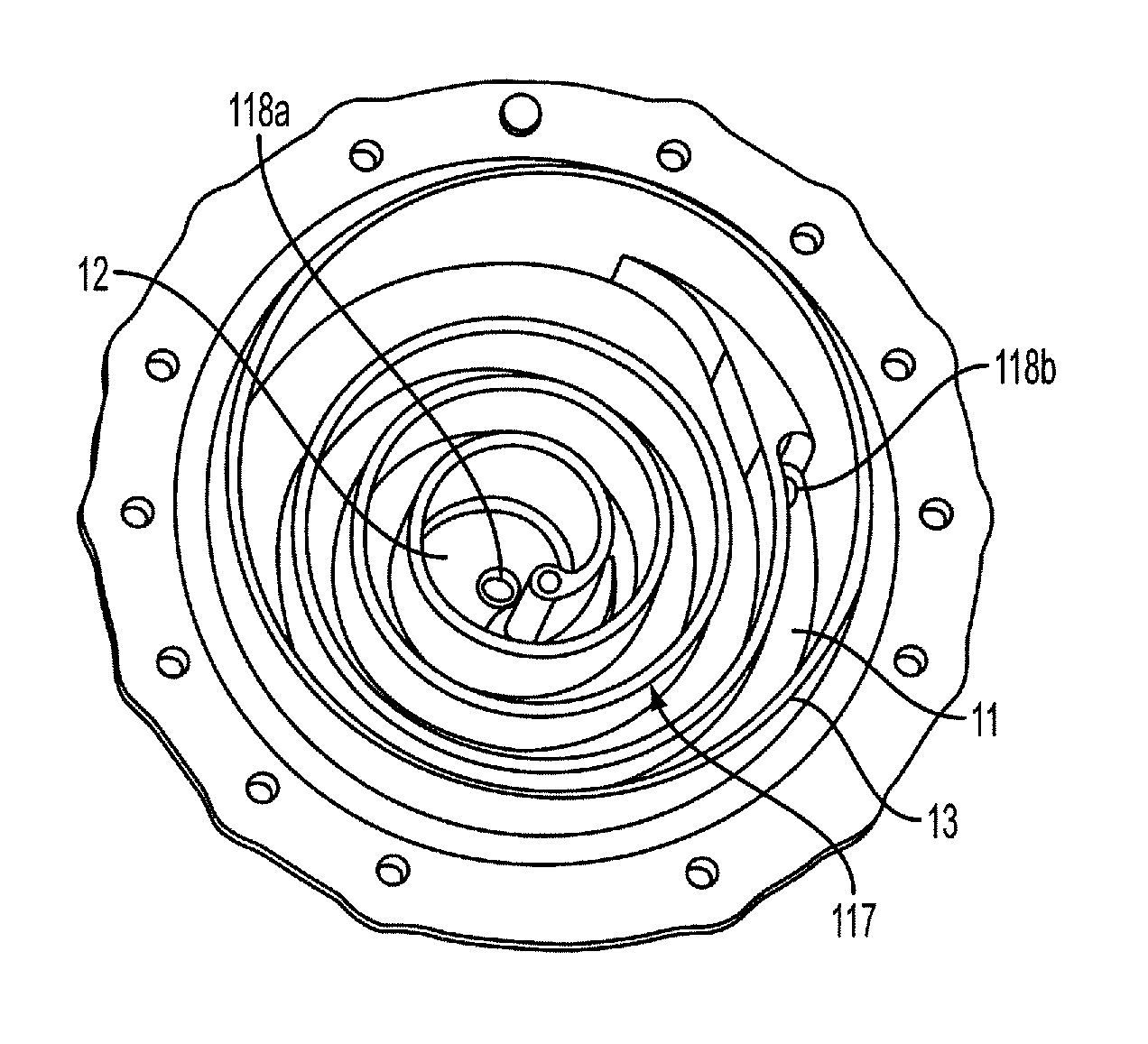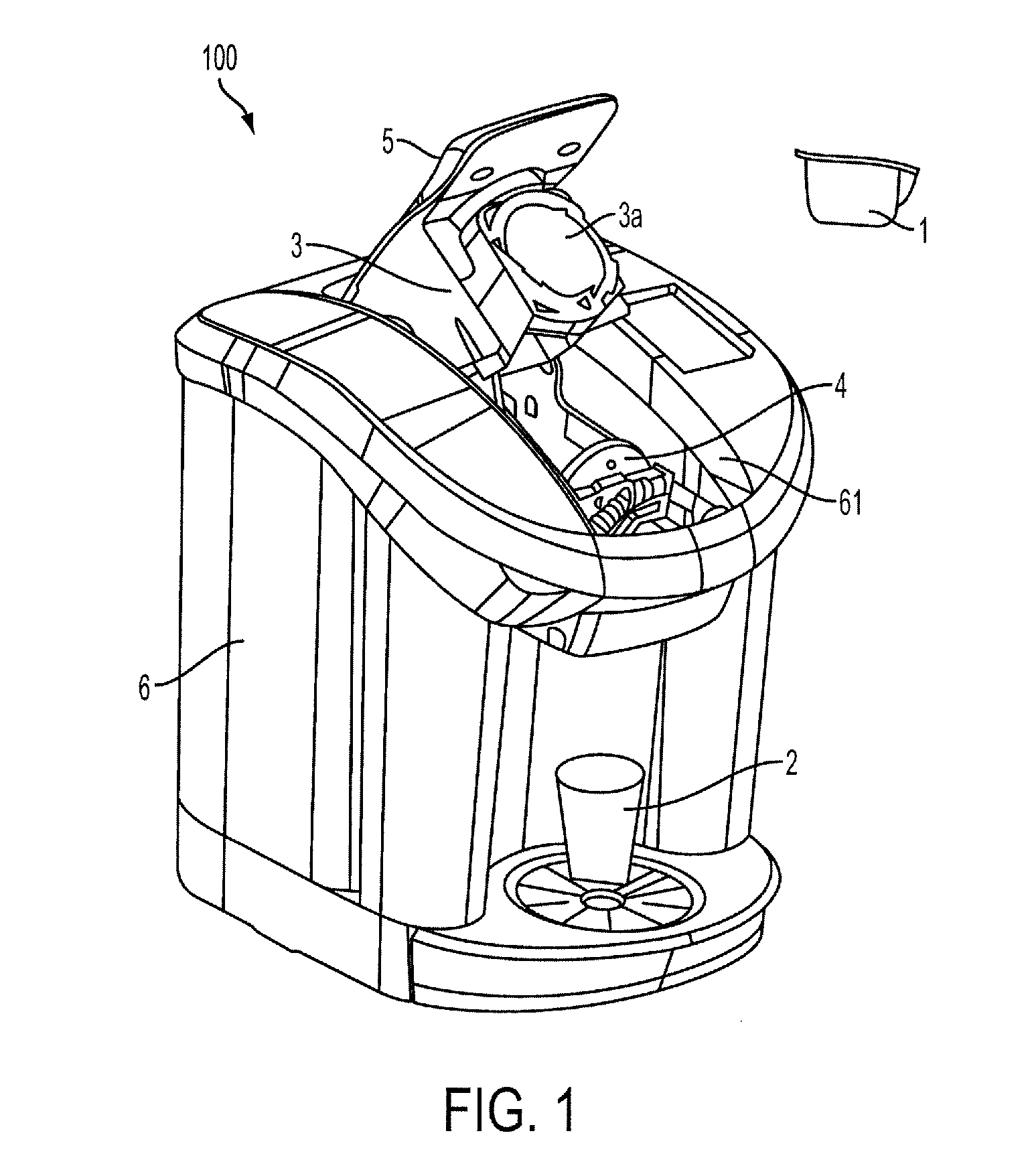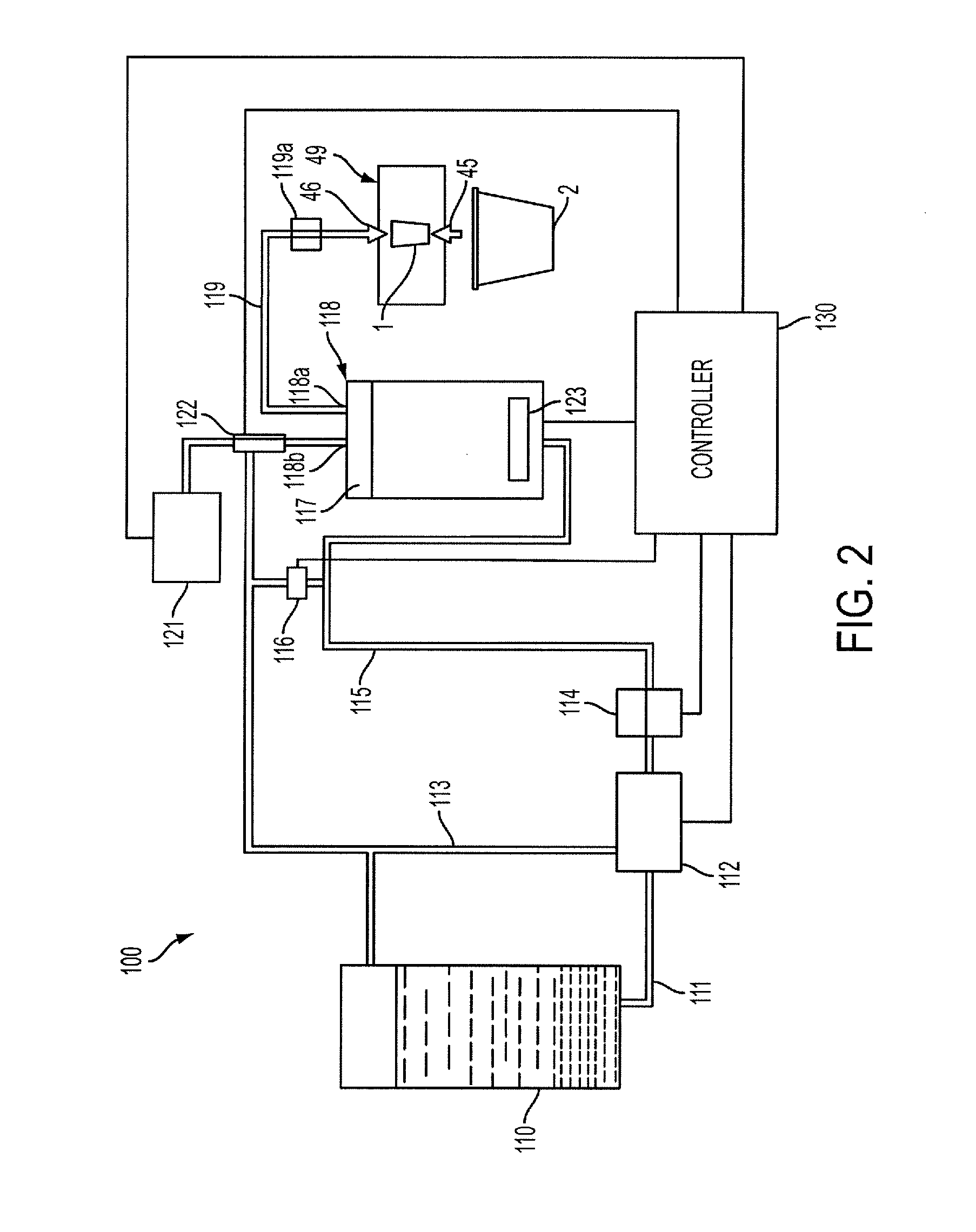[0005]Some aspects of the invention relate to arrangements for helping to prevent unwanted discharge of water or other liquid from a heater tank, e.g., due to expansion of the liquid in the tank during heating. This problem may be encountered with systems that deliver water from a heater tank by introducing additional water into the tank so as to force heated water to a brew chamber or other section to form a beverage. For example, in some systems, a heater tank may be full of heated water such that the hottest water is located near a top of the tank. To deliver heated water from the tank, cold water may be introduced at an inlet located near the bottom of the tank. The addition of cold water to the tank may displace heated water in the tank, causing the heated water to exit the tank, e.g., at an outlet near the top of the heater tank. This type of system can be very effective, and can deliver precise volumes of water, e.g., where the volume of cold water delivered to the heater tank can be closely controlled.
[0008]In one aspect of the invention, a beverage forming system that delivers heated liquid from a heater tank for discharge from the system by introducing liquid into the tank, e.g., to make a beverage, may operate to introduce air into the heater tank after liquid delivery is complete to evacuate a top portion of the tank of liquid and a conduit leading from a top of the tank to a brew chamber or other outlet. While systems like that in U.S. Pat. No. 7,398,726 introduce air into a heater tank to deliver heated water from the tank, such systems do not deliver heated liquid from the tank by introducing liquid into the tank. Also, in some embodiments in accordance with the invention, an outlet of the heater tank may be at an extreme top of the tank. Thus, by evacuating the top portion of to the tank of liquid, unwanted discharge of liquid from the tank may be made more effective.
[0010]In one embodiment, an air inlet end of the expansion chamber flow path may be arranged to be lower than an outlet end of the flow path at the heater tank outlet. This arrangement may allow the expansion chamber to provide a well-controlled gas volume in the heater tank and / or help expel liquid from the expansion chamber and to the tank outlet during air purging of the expansion chamber. For example, by having the air inlet end positioned below the outlet end, air will tend to flow from the air inlet end toward the outlet end. This flow may help to at least partially evacuate the flow path as air flows from the air inlet end to the outlet end and displaces any liquid in the flow path. Also, any liquid in the tank will tend to enter the expansion chamber at the air inlet end rather than at the outlet end, e.g., because the liquid will tend to be heavier than air in the expansion chamber. As a result, any volume expansion of liquid will tend to initially enter the expansion chamber at the air inlet end, and subsequently flow toward the outlet end along the flow path with any further expansion. That is, liquid will tend to first fill (or at least partially or substantially fill) the expansion chamber before reaching the outlet of the heater tank. By providing the expansion chamber flow path with a desired volume, unwanted discharge of liquid from the tank due to thermal expansion can be resisted.
[0012]In some embodiments, an air pump may be arranged to introduce air into the air inlet for flow through the expansion chamber and to the outlet. Thus, the air pump may be operated after liquid delivery from the tank is complete (e.g., introduction of cool, unheated water into the heater tank is stopped), and may serve to not only to at least partially remove liquid from the expansion chamber, but also help to remove liquid from a conduit leading from the tank outlet to a brew chamber or other beverage outlet. Therefore, the air pump and the expansion chamber may be arranged such that air introduced into the air inlet at least partially evacuates a top of the heater tank of liquid. Also, some beverage forming systems may use a cartridge to hold a beverage medium used to make a beverage by mixing heated liquid with the beverage medium in the cartridge. Air introduced into the tank by the air pump may also help to expel beverage from the cartridge, e.g., to help reduce dripping of beverage from the cartridge after beverage formation is complete.
[0016]In another aspect of the invention, a method of forming a beverage includes heating liquid in the heater tank, providing a liquid to a heater tank via a liquid inlet, delivering liquid from the heater tank to a beverage medium to form a beverage via an outlet at a top of the heater tank, and introducing air into a tortuous flow path of an expansion chamber at the top of the heater tank after delivery of liquid to the heater tank is stopped to expel liquid from at least a portion of the expansion chamber. As discussed above, expelling liquid from at least a portion of an expansion chamber may help reduce or eliminate unwanted discharge of liquid from the heater tank, e.g., due to thermal expansion or other mechanisms, such as siphon-based flow.
 Login to View More
Login to View More  Login to View More
Login to View More 


